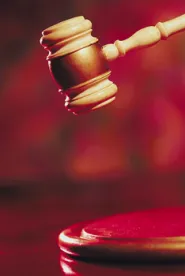In In re Steve Morsa, No. 2012-1085, decided March 25, 2013, the Federal Circuit held that expert evidence is not required to show a prior art reference is not enabled.
On April 12, 2011, Steve Morsa filed a nonprovisional patent application titled “Method and Apparatus for the Furnishing of Benefits Information and Benefits” for a system that received benefits information from a user, searched a database of benefits matching the benefits request, and returned the matched benefits request to the user.1
During prosecution of the application, the examiner rejected claim 271 based on a publication titled “Peter Martin Associates Press Release” (PMA) published on September 27, 1999, announcing the release of “HelpWorks, Web Edition.”2
Morsa appealed the examiner’s rejection to the Board of Patent Appeals and Interferences (BPAI), arguing that the PMA was not enabling prior art.3 Specifically, Morsa argued that the PMA was not enabling on its face and that the PMA lacked specific details on the features and operational characteristics of the “HelpWorks, Web Edition” software.4 Morsa supported this argument by posing specific and pointed questions regarding the absence of detail in the PMA, citing case law discussing the requirement that prior art be enabling, and citing specific reasons why the disclosure in the PMA could not produce the claimed invention.5Further, Morsa pointed out that the PMA totaled only 117 words.6 In upholding the examiner’s rejections, the BPAI concluded that the PMA was presumed enabling because Morsa failed to provide affidavits or declarations to establish that the PMA was not enabling.7
In overturning the BPAI’s decision, the Federal Circuit stated that the burden to challenge prior art rests with the applicant, and the examiner need not provide evidence of enablement when asserting a prior art reference.8 However, once an applicant challenges the enablement of a prior art reference, the examiner must address the challenge.9 The court held that in challenging a prior art reference, the applicant must do more than state an unsupported belief that a reference is non-enabling, but the use of declarations or affidavits was not required in all cases.10 The court went on to state that where a reference appears not to be enabled on its face, a challenge may be lodged without the use of “expert assistance.”11
The court also rejected the USPTO’s argument that a prior art reference that is “at least as enabling” as an application renders the prior art reference enabled.12 In rejecting this assertion, the court stated that an examiner should compare the level of detail of a prior reference to the level of detail in the related portions of an application to determine whether a prior art reference is enabled as to the claims.13 The court also stated that, absent a finding that an applicant’s disclosures are unrelated to the claimed invention, an application is not comparable to a prior art reference if the detail of the disclosure of the application far exceeds that of the prior art reference.14
1 Morsa, at 2.
2 Id. at 3.
3 Id. at 5.
4 Id. at 5-6.
5 Id.
6 Id. at 6.
7 Id.
8 Id. at 9-10.
9 Id. at 10.
10 Id.
11 Id.
12 Id.
13 Id.
14 Id.


 />i
/>i
